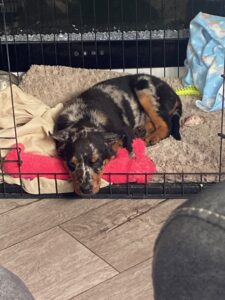
Bringing a new puppy into your home is an exciting and rewarding experience. However, along with all the cuddles and playtime comes the important task of training your furry companion. Proper training not only helps your puppy become a well-behaved member of the family but also strengthens the bond between you and your four-legged friend. As a dog trainer in Waco, I am writing this to provide valuable insights and tips for a successful puppy training experience.
Start Early and Stay Consistent
Training should begin as soon as you bring your puppy home. Every interaction with your puppy is a learning opportunity, so be consistent in your approach. Establish clear rules and boundaries from the start to avoid confusion.
Positive Reinforcement is Key
Use positive reinforcement techniques such as treats, praise, and playtime to reward good behavior. This method not only motivates your puppy but also creates a positive association with following commands, contributing to effective dog obedience training.
Teach Basic Commands
Start with basic commands like “sit,” “come,” “down,” and “stay.” These commands form the foundation of your puppy’s training and help establish good behavior patterns.
Crate Training for Comfort
Introduce your puppy to crate training early on. A crate provides a safe and comfortable space for your puppy and can aid in dog housebreaking training, preventing destructive behaviors.
Socialization Matters
Expose your puppy to various people, pets, and environments to help them become well-adjusted and confident. Proper socialization is crucial for preventing fear and aggression issues later on.
Potty Training 101
Establish a consistent potty routine and use positive reinforcement when your puppy goes in the right place. Be patient during this process, as accidents are a natural part of learning.
Addressing Behavioral Issues
If your puppy exhibits unwanted behaviors like biting or excessive barking, redirect their attention to appropriate toys or activities. Consistency in addressing these issues is key to modifying behavior.
Leash Training for Walks
Teach your puppy to walk on a leash without pulling. Start in a quiet area and gradually increase the level of distraction to help them master loose-leash walking.
Patience and Persistence
Remember that training takes time and patience. Keep training sessions short, fun, and end on a positive note to keep your puppy engaged and motivated.
Consistency Among Family Members
Ensure that everyone in the household follows the same rules and reinforces good behavior consistently. This consistency helps prevent confusion for your puppy.
Common Mistakes to Avoid When Training a Puppy:
- Yelling or scolding: Steer clear of yelling, screaming, or using your puppy’s name as punishment.
- Inconsistency: Maintain a consistent training approach and rules to prevent confusion for your puppy.
- Impatience: Recognize that training takes time; be patient with your puppy’s learning process.
- Harsh discipline: Refrain from using harsh disciplinary methods, as they can be counterproductive.
- Incorrect timing with rewards: Ensure you promptly reward your puppy to effectively reinforce good behavior.
- Rewarding negative behavior: Only reinforce positive behaviors to avoid inadvertently encouraging negative ones.
- Not socializing enough: Prioritize proper socialization for a well-rounded and confident dog.
- Using the wrong rewards: Choose rewards that motivate your puppy effectively during training sessions.
- Training sessions lasting too long: Keep sessions short to prevent boredom and maintain your puppy’s focus.
- Being too emotional: Stay calm during training sessions to create a positive learning environment for your puppy.
- Repeating commands: Avoid excessive repetition, which can lead to delayed responses from your puppy.
- Failing to practice in-between classes: Regular at-home practice is crucial for reinforcing learning outside formal training sessions.
- Useless repetition: If a training method is not working, try a different approach instead of persistently using an unsuccessful one.
- Working when frustrated: Avoid training your puppy when in a bad mood, as it can adversely impact the training session.
Conclusion:
In conclusion, training your puppy is a journey filled with challenges, triumphs, and endless opportunities for growth and bonding. By providing a supportive and nurturing environment, using positive reinforcement techniques, and embracing the joys of teaching and learning together, you’ll set your puppy up for a lifetime of happiness and success. At our dog training center in Waco, we offer expert guidance in positive reinforcement training methods, ensuring a fulfilling and joyous journey for both you and your puppy.
